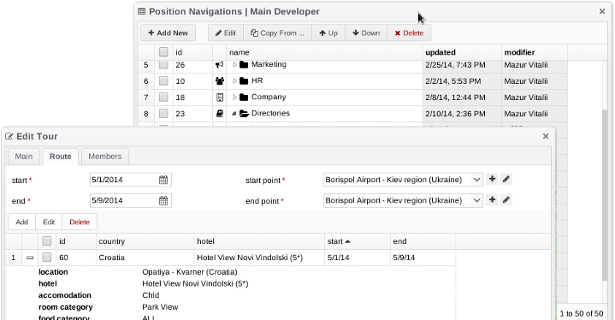How anyone can make money through open source software under gpl
Open source software is changing the world of Information Technology. But making it work for your company is far more complicated than simply installing a copy of Linux.
If you are serious about using open source to cut costs, accelerate development, and reduce vendor lock-in, you must institutionalize skills and create new ways of working.
You must understand how open source is different from commercial software and what responsibilities and risks it brings. Open Source for the Enterprise is a sober guide to putting open source to work in the modern IT department.
Open source software is software whose code is freely available to anyone who wants to change and redistribute it. New commercial support services, smaller licensing fees, increased collaboration, and a friendlier platform to sell products and services are just a few of the reasons open source is so attractive to IT departments.
Some of the open source projects that are in current, widespread use in businesses large and small include Linux, FreeBSD, Apache, MySQL, PostgreSQL, JBOSS, and Perl. These have been used to such great effect by Google, Amazon, Yahoo!
Large vendors such as IBM, Novell, and Hewlett Packard have made open source a lynchpin of their offerings. Open source has entered a new area where it is being used as a marketing device, a collaborative software development methodology, and a business model.
linux - Making money with Open Source as a developer? - Software Engineering Stack Exchange
This book provides something far more valuable than either the cheerleading or the fear-mongering one hears about open source. The authors are Dan Woods, former CTO of TheStreet. Each has used open source software for some 15 years at IT departments large and small. They have collected the wisdom of a host of experts from IT departments, open source communities, and software companies.
Open Source for the Enterprise provides a top to bottom view not only of the technology, but of the skills required to manage it and the organizational issues that must be addressed.

Here are the sorts of questions answered in the book:. Praise for Open Source for the Enterprise: This is a new game and onegenerally not covered in existing books on Open Source which continue toassume that the readers are 'deep dive' technologists, Open Source for the Enterprise provides everyone from business managers to technologistswith the balanced view that has been missing. Well worth the time toread, and also worth encouraging others in your enterprise to read as well. Its practical, no-BS approach will make sure you're armedwith the information you need to deploy applications successfully aswell as helping you know when to say "no".
If you're trying to sell opensource to management, this book will give you the ammunition you need. If you're a manager trying to drive down cost using open source, thisbook will tell you what questions to ask your staff.
In short, it's aclear, concise explanation of how to successfully leverage open sourcewithout making the big mistakes that can get you fired. If you are serious about using open source to cut costs, accelerate development, and reduce vendor lock-in, you must institutionalize Open Source for the Enterprise: Managing Risks, Reaping Rewards.
Dan Woods , Gautam Guliani. Here are the sorts of questions answered in the book: Why is there a "productization gap" in most open source projects?
How can the maturity of open source be evaluated? How can the ROI of open source be calculated?
What skills are needed to use open source? What sorts of open source projects are appropriate for IT departments at the beginner, intermediate, advanced, and expert levels? What questions need to be answered by an open source strategy? What policies for governance can be instituted to control the adoption of open source?
Open-source software - Wikipedia
What new commercial services can help manage the risks of open source? Do differences in open source licenses matter? How will using open source transform an IT department?
Open Source for the Enterprise: Managing Risks, Reaping Rewards - Dan Woods, Gautam Guliani - Google Livres
Measuring the Maturity of Open Source. The Open Source Skill Set. Making the ROI Case. Designing an Open Source Strategy. Support Models for Open Source. Making Open Source Projects Easy to Adopt.
A Comparison of Open Source Licenses. The Open Source Platform. EndUser Computing on the Desktop. Open Source and Email. Groupware Portals and Collaboration. Web Publishing and Content Management. Open Source Under Attack.
This book also provides a top to bottom view not only of the Managing Risks, Reaping Rewards Dan Woods , Gautam Guliani Affichage d'extraits - New Media to TheStreet. He has managed the product development cycle from initial requirements through sales for web sites and software products designed for the publishing and financial services industries.
Dan has also navigated all phases of the business cycle: Dan is the author of two books and a frequent contributor to InfoWorld and other publications. Managing Risks, Reaping Rewards Dan Woods , Gautam Guliani "O'Reilly Media, Inc. The Nature of Open Source.